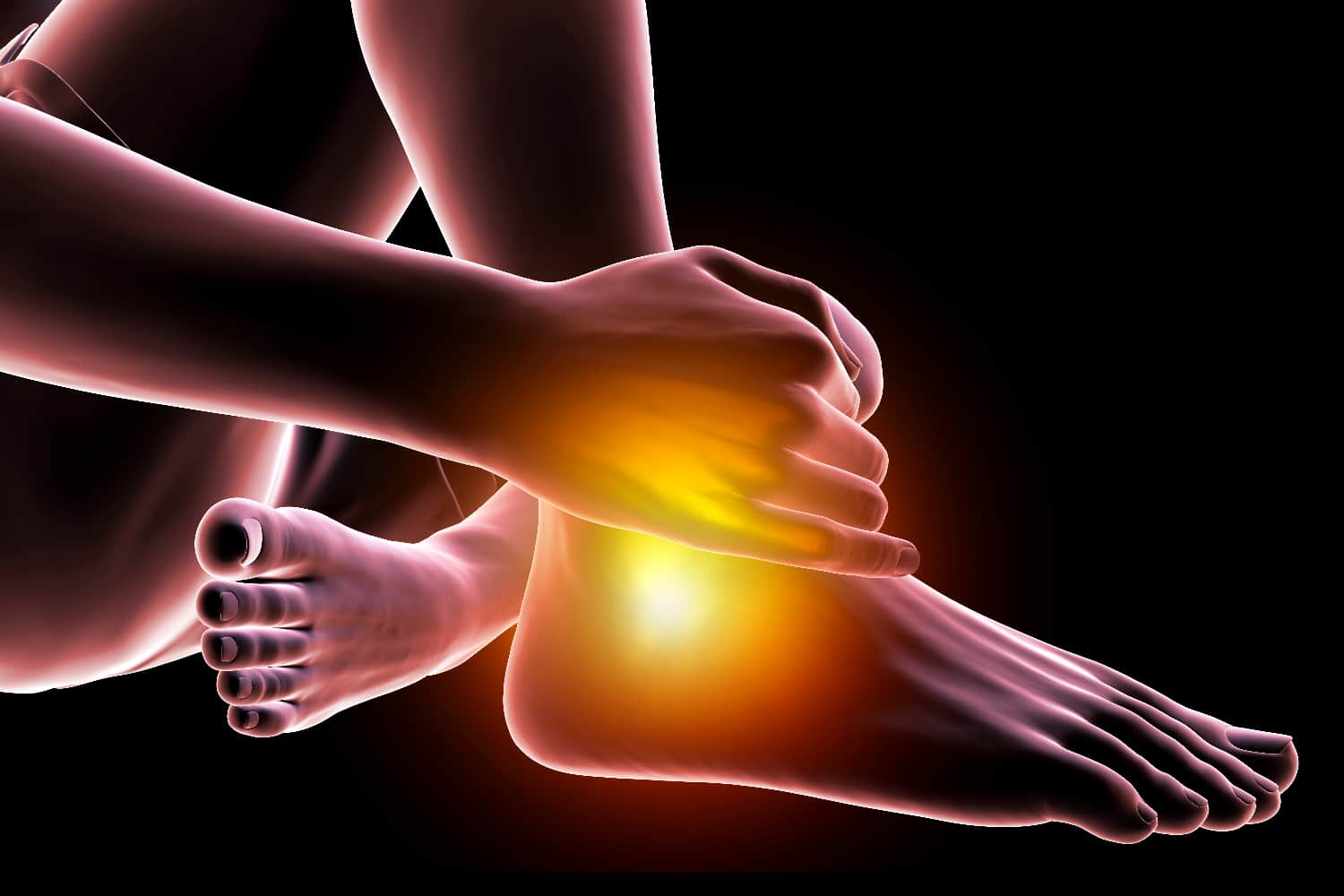What Is Arthrosis? Understanding Symptoms
and Treatment
|
| Arthrosis is a form of arthritis that brings discomfort and, at times, can interfere with daily activities and quality of life. Understanding its symptoms, causes, and treatments is critical to overcoming your discomfort and working toward a healthier life. |
In this blog post, we'll delve into the world of arthrosis. From the fundamentals of what it is to how it differs from different types of arthritis, we'll explore its effects on our lives and how to manage them best. Whether you have arthrosis, are a caretaker for someone with arthrosis, or are simply seeking to learn, this post will help you better understand arthrosis and the steps you can take to manage it.
What Is Arthrosis?
Arthrosis is a specific type of joint disorder that affects the cartilage within joints, leading to decreased range of motion and discomfort. Arthrosis is more commonly known as osteoarthritis, which is caused by the breakdown of cartilage and usually occurs due to wear-and-tear or age.
As the cartilage deteriorates, surrounding bone is thus exposed, causing inflammation and pain in the joint. But don't worry; we'll work through it.
What Are the Most Common Joints Affected By Arthrosis?

Arthrosis is one of the most common types of arthritis, and one of the most common joints affected by arthrosis is the big toe. Your big toe bears most of your weight when you walk, and over time, repeated wear and tear can contribute to the development of arthritis.
Other Commonly Affected Joints
While the big toe may be the star of the arthrosis show, it's far from the only joint affected. Other joints commonly affected by arthrosis include the hips, knees, neck, shoulders, thumbs, and spine. These joints, like the big toe, bear a lot of weight and are subject to a lot of wear and tear over the years.
The hips, for example, play a crucial role in our daily activities, from walking and standing to sitting and sleeping. When arthrosis affects the hips, it can cause pain and stiffness, making even the simplest movements difficult. The same can be said for the knees, which support most of our weight and are critical in movement and mobility.
What Are the Risk Factors for Arthrosis?
Arthrosis and arthritis pain can run in families. However, understanding the risk factors for developing arthrosis can help you take steps to reduce your risk and maintain a high quality of life.
Here are some of the critical risk factors to keep in mind:
- Family history: If you have a family member diagnosed with arthrosis, you may have a higher risk of developing the condition. This could be due to a shared genetic predisposition or a shared lifestyle and environment that increases the risk of developing arthrosis.
- Obesity: Excess weight puts extra stress on the joints, increasing the risk of developing arthrosis. The added stress on the joints can cause wear and tear on the cartilage, leading to pain, stiffness, and limited mobility.
- Joint damage: Previous injuries or joint damage can increase the risk of developing arthrosis. In addition, joints damaged or subjected to injury are more likely to experience wear and tear over time, increasing the risk of developing arthrosis.
- Genes: Studies have shown that certain genes, such as theCOL2A1 gene, are associated with a higher risk of developing arthrosis. If you have a family history of arthrosis, it may be worth exploring your genetic predisposition to the condition.
- Age: Our joints naturally wear down as we age, increasing the risk of developing arthrosis. With age, the cartilage in our joints can become thinner and less able to absorb shock, leading to pain, stiffness, and limited mobility.
- Gender: Women aremore likely to develop arthrosis than men. This could be due to hormonal changes, lifestyle factors, or other biological differences between men and women.
- Repetitive movements: Jobs or repetitive activities can increase the risk of developing arthrosis. This is because repetitive movements put additional stress on the joints, causing wear and tear over time.
What Are the Symptoms of Arthrosis?

Arthrosis can manifest in many ways, largely impacting your ability to complete the tasks you once did with ease.
Here's an overview of the common symptoms of arthritis, and arthrosis in particular, and how they can affect a person's quality of life:
- Joint pain: Arthrosis can cause pain ranging from a dull ache to a sharp, shooting pain. The pain may be worse with activity and better with rest. Depending on the affected joint, the pain can be felt in the joint itself or in the surrounding muscles and ligaments.
- Joint stiffness: Arthrosis can cause joint stiffness, especially after periods of inactivity, such as sitting or sleeping. The joint may feel stiff and difficult to move, making even simple movements like getting out of bed or walking up the stairs challenging.
- Limited range of motion: As the joint becomes more damaged, the range of motion may become limited, making it difficult to move the joint through its full range of motion.
- Deformities: In severe cases of arthrosis, the joint may become deformed, causing the bones to rub against each other and causing pain and limited mobility.
- Joint crepitus: Some people with arthrosis may hear a crunching or grinding sound when moving the affected joint, known asjoint crepitus.
These symptoms can significantly impact a person's quality of life, making even the simplest movements difficult and causing pain and discomfort. The severity of the symptoms can vary depending on the type of arthrosis and the affected joint, but one thing is for sure: arthrosis can be a painful performance.
How Is Arthrosis Diagnosed?
Arthrosis can be a tricky tune to diagnose and play, but with suitable instruments and sheet music, it's possible to maintain a beautiful melody of mobility.
Let's delve into the diagnostic tests and treatment options for arthrosis:
- X-rays: X-rays are like the conductor of diagnostic tests, providing a clear picture of what's happening in the affected joint. They can reveal changes in the joint, such as bone spurs and loss of cartilage, helping diagnose arthrosis.
- Imaging tests: Imaging tests, such as MRI or CT scans, are the virtuosos of diagnosis, providing a detailed look at the affected joint and all its intricate movements. They can help diagnose arthrosis with precision and accuracy.
- Blood tests: Blood tests are the choir of diagnosis, singing the song of joint inflammation. They can help diagnose arthrosis by measuring uric acid levels and other joint inflammation markers.
What Are the Treatment Options for Arthrosis?
Diagnosing and treating arthrosis requires a harmonious approach, including a thorough evaluation, imaging tests, and a personalized treatment plan. The proper diagnostic tests and treatment plan can relieve joint pain, improve joint function, and support overall comfort and mobility.
Some treatment options for arthrosis include:
- Physical therapy: Physical therapy is like the rhythm section of treatment, helping improve range of motion and relieve joint pain, all while slowing the progression of arthrosis.
- Non-steroidal anti-inflammatory drugs (NSAIDs): NSAIDs, such as ibuprofen, are like the brass section of treatment, providing relief for joint pain and reducing inflammation with a powerful punch.
- Over-the-counter supplements: Supplements, such as glucosamine and chondroitin, are like the string section of treatment, lifting up symptoms with a melodic serenity and providing support for cartilage.
- Physical therapist: A physical therapist is like the music director of treatment, leading the way with a personalized treatment plan for arthrosis, complete with exercises and movements to help manage the condition.
- Orthopedic doctor: An orthopedic doctor is like the composer of treatment, writing a customized song for arthrosis tailored to individual needs. Through their wealth of knowledge, they can offer treatment advice and options that are in tune with a person's lifestyle.
- Joint replacement: Joint replacement may be recommended for severe cases of arthrosis, where the joint has become so damaged that it cannot be repaired. It's like the grand finale of treatment, providing a new and improved joint to help people get back to their favorite tunes.
What Are Some Alternative Approaches for Managing Arthrosis?

Arthrosis pain can be a real downer, but there are several strategies for managing this joint pain and getting back to feeling your best.
Let's take a look at a holistic approach to managing arthrosis pain:
Lifestyle Changes
Your lifestyle choices can have a significant impact on your overall wellness, including your arthrosis.
The following lifestyle changes may help you manage your symptoms:
-
Maintaining a healthy weight: Keeping your weight in check will help relieve the stress on your joints and keep you feeling light on your feet.
-
Modifying activities: Avoiding repetitive movements or modifying activities that put extra stress on the joints can help reduce joint pain and keep you moving easily.
-
Eating a balanced diet: Incorporating anti-inflammatory foods can help improve joint health and keep you feeling like a million bucks.
Complementary Therapies
Some complementary therapies are also thought to have beneficial effects when it comes to pain management.
Examples include:
-
Acupuncture: This ancient Chinese therapy involves the insertion of fine needles into specific points on the body to stimulate energy flow and relieve joint pain. Acupuncture can also improve joint function and leave you feeling relaxed and rejuvenated.
-
Massage therapy: A gentle touch can do wonders for arthritic joints. Massage therapy can help reduce joint pain and stiffness by promoting circulation and relaxing tight muscles. With regular massage therapy, you'll be able to move with greater ease and leave feeling like a new person.
Mind-Body Techniques
Mindfulness is another method of relieving pain, namely by staying present and strengthening your mind-body connection.
You can do this through:
-
Meditation: Pain can be stressful, but stress can also increase pain. That's why finding ways to manage stress and reduce joint pain is essential. Meditation is a great way to do just that. Focusing on your breath and letting go of worries can calm your mind and reduce joint pain.
-
Yoga: Practicing yoga can help improve joint flexibility and reduce joint pain. By gently stretching and strengthening your muscles, you'll be able to move with greater ease. In addition, yoga is a great companion for managing arthrosis pain, as it helps to bring the body and mind into harmony.
Putting Arthrosis in its Place
In closing, arthrosis is a joint disease that affects many individuals and can bring about pain, discomfort, and a decreased quality of life. But there is hope. From physical therapy to complementary therapies, numerous options are available to help manage the symptoms of arthrosis and improve joint function.
Muscle MX is dedicated to empowering individuals with modern science and natural remedies to optimize their body's performance and lead healthier, more active lives.
Join us and embark on this journey toward discomfort-free living. Let's strive for a life full of joy and comfort — because isn't that what we all truly deserve?
Sources:
COL2A1 gene | MedlinePlus Genetics
Osteoarthritis Risk Factors in Women & How to Prevent Them | HSS
Bone Cracking & Joint Popping (Crepitus) | Aurora Health Care













































